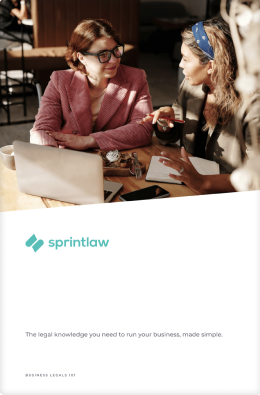Contents
If you’re already leasing certain premises for your business, and you want to sublease the whole or part of these premises to another party, this is known as subleasing your premises.
When inviting an incoming sub-tenant, you want to make sure the details around your relationship with them and the head landlord are all set out in writing to avoid any legal headaches later.
This is where a Commercial Sublease Agreement comes into effect.
What Is A Commercial Sublease Agreement?
A Commercial Sublease Agreement is a contract that sets out the relationship between you (the existing tenant) and the incoming sub-tenant (person you’re subleasing the premises to).
So, when you have an existing lease with certain obligations to your landlord, a sublease agreement with a third party does not affect your original lease. Think of it as a separate set of obligations that are in effect for the duration of your original lease.
However, you do need to ensure that your landlord allows a sublease (you may need to Review Your Commercial Lease Agreement to do this).
What Does It Include?
A Commercial Sublease Agreement includes key details about your sublease arrangement. It’s important because you will be relying on this document for any potential disputes or issues that arise during the sublease. It should also clarify some key aspects from the outset, such as:
- The consent of the head landlord
- Payment of rent
- Lease expiration
- Security deposit
- Insurance
- Other relevant duties
It’s worth noting that a Sublease Agreement means that the subtenant is responsible to you, not the head landlord. This is why it’s so important to have an Agreement in place. The key terms should clarify who will be paying what, and to who.
How Can I Get A Commercial Sublease Agreement Drafted?
A Commercial Sublease Agreement will need to be drafted according to a business’ specific structure and needs. So, it’s a good idea to get a lawyer’s help doing this.
For example, if you only want to sublease part of your premises, but you’re not sure if your original Lease Agreement would allow this, it’s worth speaking to a professional so you know you’re taking the right steps.
At Sprintlaw, we offer a Commercial Sublease Agreement package which covers this kind of arrangement (and also ensures you’re compliant with the relevant rules depending on your business’ structure and interests).
Our package includes:
- A Commercial Sublease Agreement tailored to your business
- Advice on your legal rights and obligations
- A high level review of your Head Lease
- A review of one title search on the leased premises
- Phone consultations with a Sprintlaw lawyer who can answer your questions
- A complimentary amendment to the final draft we provide to you
Next Steps
When it comes to meeting your obligations under a contract, or entering into a new one, you want to make sure your business is compliant with the relevant laws and you’re not breaching any existing duties to other parties.
So, it’s important to get legal help for your Commercial Sublease Agreement. This way, you can avoid creating unnecessarily complex issues and clarify everyone’s responsibilities to ensure a smooth sublease.
If you would like a consultation on your options going forward, you can reach us at 1800 730 617 or team@sprintlaw.com.au for a free, no-obligations chat.
Get in touch now!
We'll get back to you within 1 business day.












